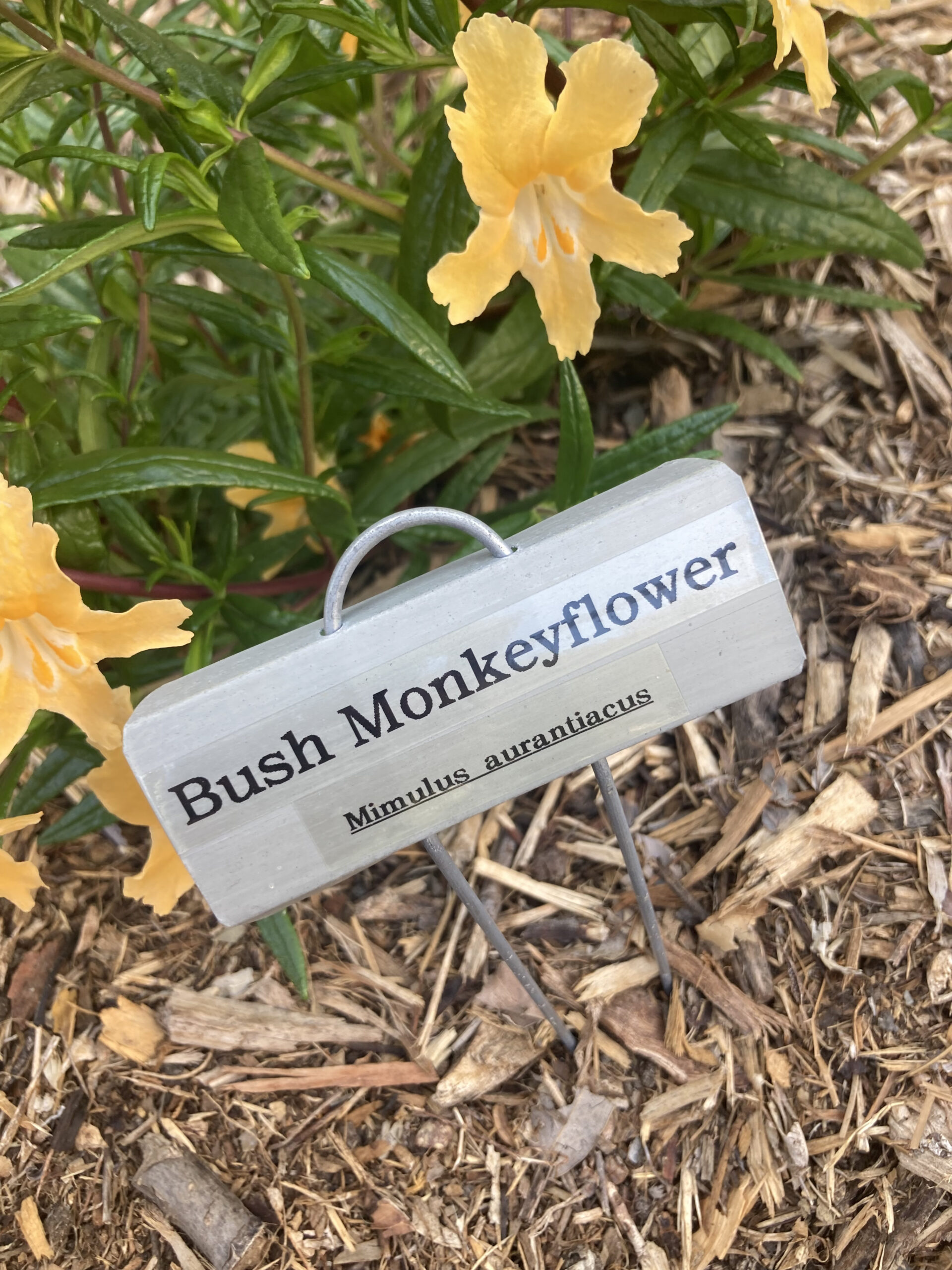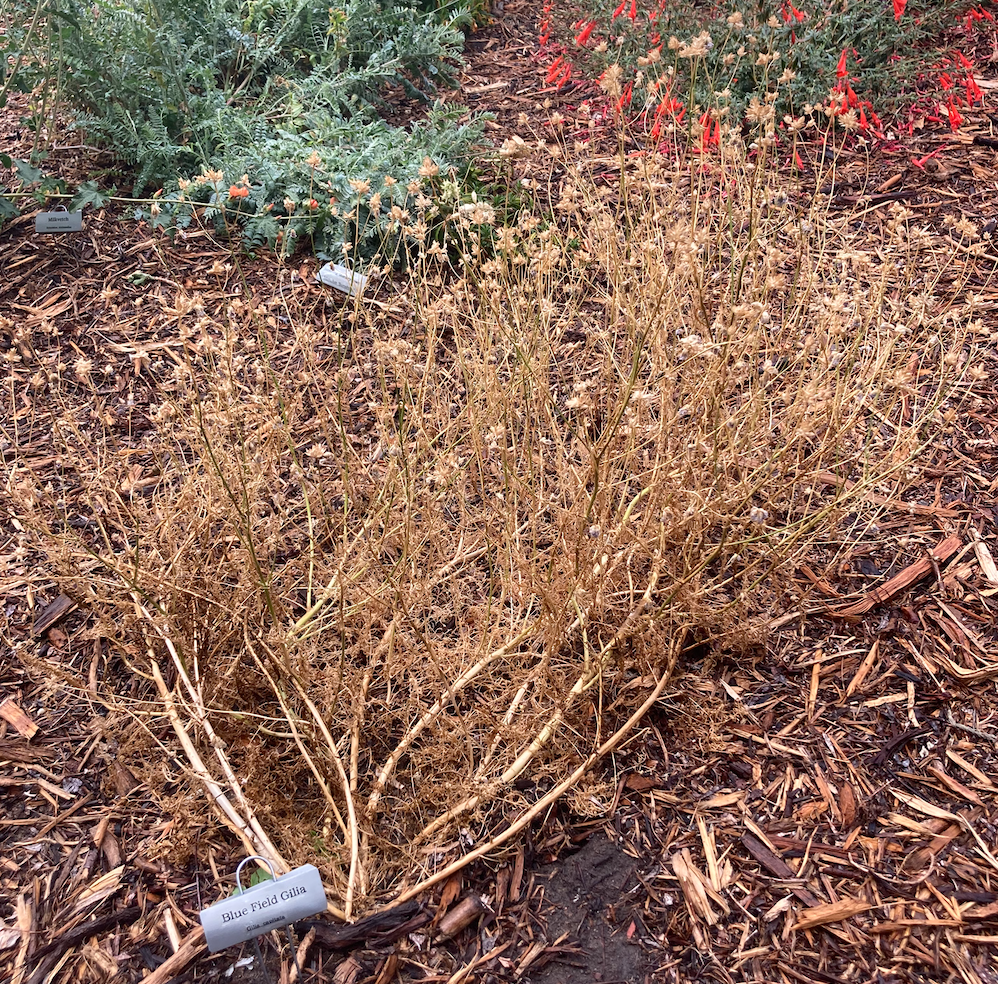Plant List
To help best sustain local butterfly populations, we utilized a combination of host and nectar plants with an emphasis on native plant species. The following is a list of all the plants currently featured in our garden along with whether they are native (green) or non-native (red). To the right is our most up-to-date digital outline of the garden.
Arugula – Eruca vesicaria
Bert’s Fuchsia – Epilobium californicum
Blue Field Gilia – Gilia capitata
Bluecrown Passion Flower – Passiflora caerulea
Bush Monkeyflower – Mimulus aurantiacus
Butterfly Bush – Cassia bicapsularis
California Buckwheat – Eriogonum fasciculatum
California Poppy – Eschscholzia californica
Carmel Creeper Lilac – Ceanothus griseus horizontalis
Coast Aster – Aster chilensis
Coast Sunflower – Encelia californica
Coyote Mint – Monardella villosa
Cape Sebastian Seaside Daisy – Erigeron glaucus ‘Cape Sebastian’
De la mina Verbena – Verbena lilacina ‘De La Mina’
Deer Weed – Lotus scoparius/Acmispon glaber
Desert Mallow – Sphaeralcea ambigua
Fennel – Foeniculum vulgare
Hummingbird Sage – Salvia spathacea
Ian Bush Manzanita – Arctostaphylos ‘Ian Bush’
Lantana – Lantana horrida
Lavender Lady Passion Vine – Passiflora caerulia ‘lavendar lady’
Lemon Coral – Sedum rupestre
Milkvetch – Astragalus trichopodus
Narrowleaf Milkweed – Asclepias fascicularis
Parsley – Petroselinum crispum
Penstemon Margarita – Penstemon heterophyllus
Plumbago – Plumbago capensis/auriculata
Popcorn Cassia – Senna didymobotrya
Pozo Blue Sage – Salvia clevelandii x leucophylla
Ray Hartman – Ceanothus ‘Ray Hartman’
Red Monkeyflower – Mimulus puniceus
San Diego Sunflower – Bahiopsis laciniata
San Diego Willowy Mint – Monardella viminea
Santa Cruz Island Buckwheat – Eriogonum arboescens
Showy Milkweed – Asclepias speciosa
Showy Penstemon – Penstemon spectabilis
Sunshine Monkeyflower – Mimulus ‘Sunshine’
Woolly Blue Curls – Trichostema lanatum


Plant Labels
All species found in the garden have at least one metal label with their common and scientific name listed. If you are having trouble identifying a species, and cannot find its label in-person or on our outline above, we recommend trying “Seek,” an app developed by iNaturalist.
Dead or Deciduous?
Our garden has a combination of annual and perennial plants, meaning that some plants are meant to only live for one growing season while others regrow every year. Perennial plants can go into hibernation similar to many animal species in order to conserve energy, particularly when resources like water are scarce. The physical result of this state can make a plant look brown and dry, even though it’s an annual, take our Blue Field Gilia to the right as an example. But don’t worry, their blooms will be back next year once it’s replanted!


